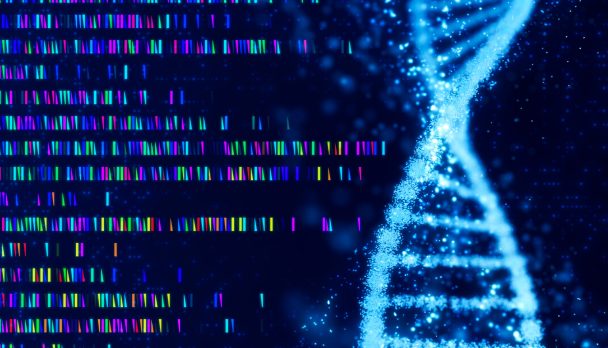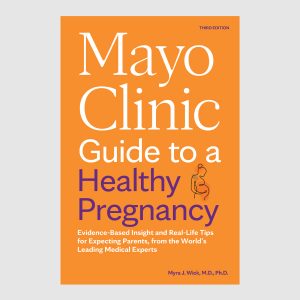
Mayo Clinic does not endorse companies or products. Advertising revenue supports our not-for-profit mission.
An array of uncommon diseases and medical conditions exist. The causes of these conditions can hide in the genes, disrupting the body’s hormone system and creating physical challenges that can sometimes be hard to diagnose.
Congenital adrenal hyperplasia (CAH) encompasses a group of genetic conditions that arise from a gene variant that leads to an enzyme deficiency in the adrenal gland. The adrenal gland produces several types of hormones, including glucocorticoids (cortisol), mineralocorticoids (aldosterone) and male hormones (androgens) such as androstenedione.
The genetic picture
For most people with CAH, a deficiency in a protein enzyme — called 21-hydroxylase — results in a cortisol deficiency. This can be life-threatening because cortisol is a hormone that is very important for survival. Additionally with CAH, the pituitary gland overstimulates the adrenal cortex — the outer layer of the adrenal gland — which leads to overproduction of androgens.
The amount of enzyme deficiency in CAH can vary, and the amount of deficiency correlates to symptom severity. “The manifestations of CAH very much depend on what percentage of activity remains for the deficient 21-hydroxylase,” says Irina Bancos, M.D., M.S., an endocrinologist at Mayo Clinic in Rochester, Minnesota, who has led clinical trials and research into better treatment for CAH.
CAH is an autosomal recessive disorder. What does that mean? In a chromosome, each specific gene comes in a pair. A person with one broken gene and one healthy gene in a gene pair will not express the genetic disease. This means that anyone can carry the gene for CAH but not know it.
However, that broken gene can still be passed to offspring. Dr. Bancos explains: “In order for a baby to be born with CAH and have manifestations of CAH, the baby needs to have both broken genes. One is not enough. There needs to be one from dad and one from mom.”
Dr. Bancos stresses the need for genetic family planning testing for couples who may be at elevated risk of passing CAH to their future children. Testing can help couples understand the risks and likelihood of passing on the gene and condition to their child.
A partner of a person with diagnosed CAH should be tested. If the partner is also found to be a carrier of the gene for CAH, the risk of having a baby with CAH is 50%. Screening for family planning purposes also is recommended for women who have not been diagnosed with CAH but who have symptoms of the nonclassic type of the disease. These symptoms may include infrequent menstrual periods and excess facial hair, especially around the mouth and chin. Otherwise, screening for carrier status is not recommended, Dr. Bancos says.
The prevalence of CAH varies among different ethnic groups, but it has traditionally been higher in those of Ashkenazi Jewish, Latino and Slavic descent.
Classic CAH
There are two predominant types of CAH: classic CAH and nonclassic CAH. Classic CAH and is found in about 1 in 15,000 births globally. It is usually discovered at birth or in infancy and is typically the more serious type.
As a result of increased male hormones, classic CAH can produce external genitals that do not look typically male or female. In women, the clitoris may be enlarged and look similar to a penis. In men, the genitals may look more typical but be bigger than average.
People with classic CAH have a severe lack of cortisol production from the adrenal glands. Lack of this crucial hormone can cause lower blood sugar and blood pressure and can lead to adrenal crisis. Adrenal crisis can lead to death without prompt treatment.
Nonclassic CAH
This type of CAH is more common and milder than classic CAH. It occurs in 1 in 1,000 births worldwide. In addition, it’s the most common type of endocrine condition affecting young women, occurring in about 6% to 10% worldwide.
Because nonclassic CAH is much less symptomatic than the classic type, it often goes undiagnosed, especially in men. If nonclassic CAH is diagnosed, it is often not found until later in childhood or adulthood.
Still, symptoms can occur. Females may have irregular periods, fertility challenges, and increased body hair and facial hair. In addition, nonclassic CAH is commonly misdiagnosed as polycystic ovarian syndrome (PCOS), Dr. Bancos says.
Sometimes it is difficult to distinguish between CAH and PCOS based on medical history or a physical exam, so doing a blood test for a specific CAH biomarker called 17 OH progesterone is recommended, Dr. Bancos says.
Men with nonclassic CAH often are not aware that they have the condition. They often find out about it only when they are doing genetic testing when considering starting a family, Dr. Bancos says.
“A woman is very much clinically affected by nonclassic CAH, but a man, not so much,” Dr. Bancos says. “In fact, men are almost never diagnosed.”
New additions to traditional treatments
There is no cure for either type of CAH, though both types can be managed effectively.
New drug treatments are on the way for CAH, and these are likely to be available in the U.S. in the latter half of 2024.
Corticosteroids are still key to treatment of CAH, though new medications deliver the necessary cortisol to people in different ways. Until the new medications are available, people with classic CAH need high doses of corticosteroids. These medications replace deficient cortisol. However, prolonged use of corticosteroids comes with complications, making treatment a delicate balance between benefits and side effects.
The new drugs will likely reduce or eliminate the need for high-dose cortisol replacement. Instead, the new drugs may allow for healthier treatment of CAH using lower, more strategically timed corticosteroid doses and other nonsteroid drugs to control the condition, Dr. Bancos says.
Because of the risk of adrenal crisis, people with classic CAH should have a glucocorticoid injection kit and have education on how to use it.
For people with nonclassic CAH, those who don’t have symptoms and not seeking to get pregnant don’t need treatment. Oral contraceptive pills can be an effective treatment for females with nonclassic CAH who are not aiming to get pregnant. Other treatment includes androgen receptor blockers, such as spironolactone. Men with nonclassic CAH generally don’t need treatment.
Mayo Clinic does not endorse companies or products. Advertising revenue supports our not-for-profit mission.

Relevant reading
Mayo Clinic on Prostate Health, 3rd Edition
Mayo Clinic on Prostate Health, 3rd Edition is an easy-to-read yet comprehensive guide to preventing, understanding, treating and living with prostate disease. Advances in research, an explosion in sophisticated imaging technology and new medical procedures have allowed for earlier diagnosis of prostate disease and more personalized treatment.





















